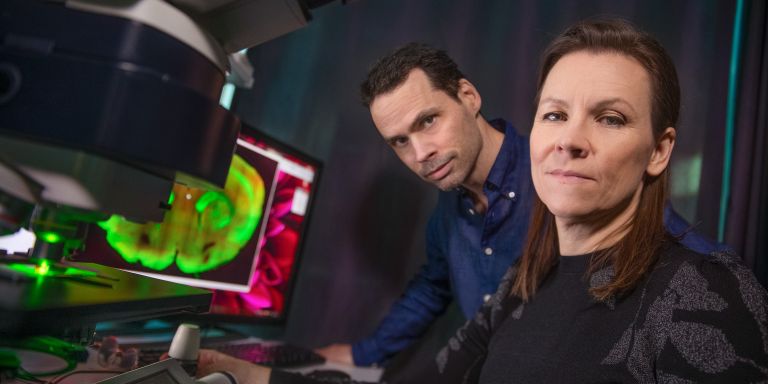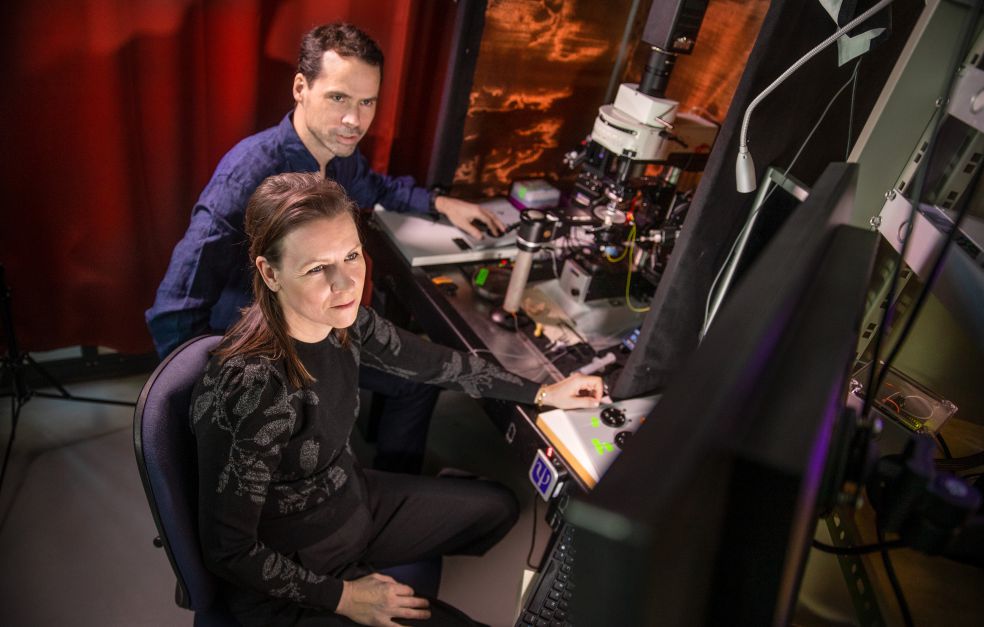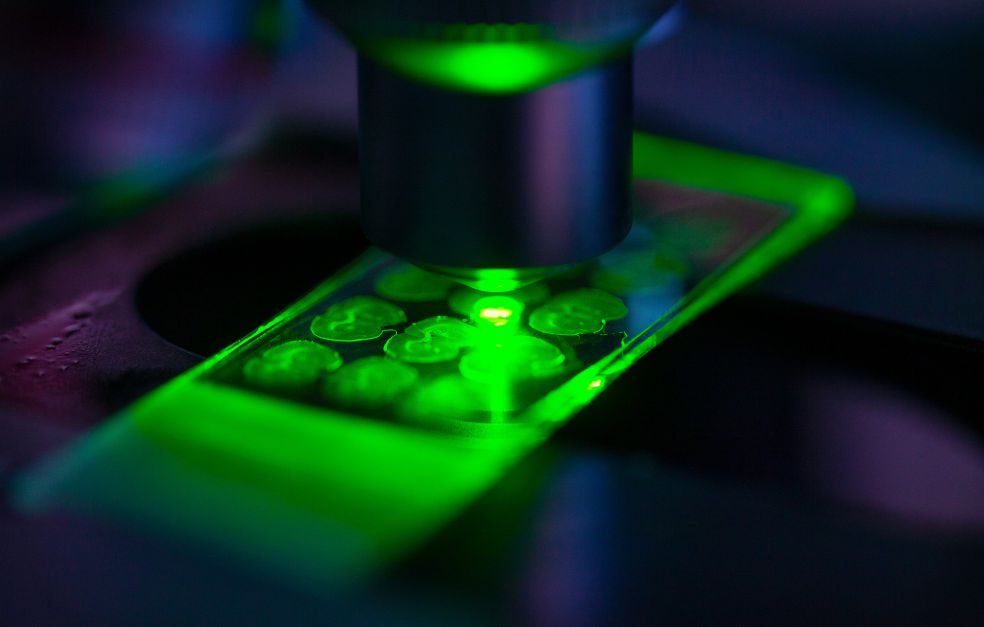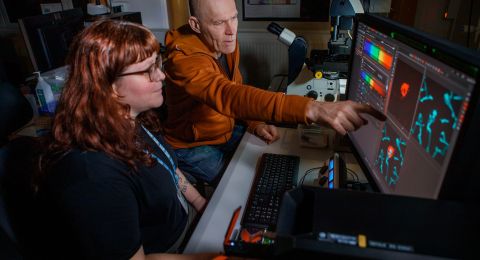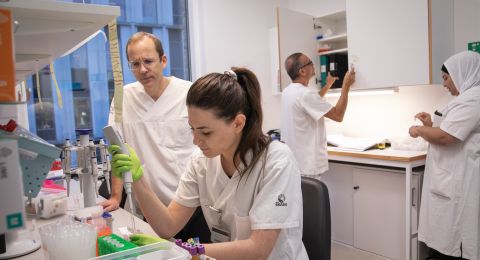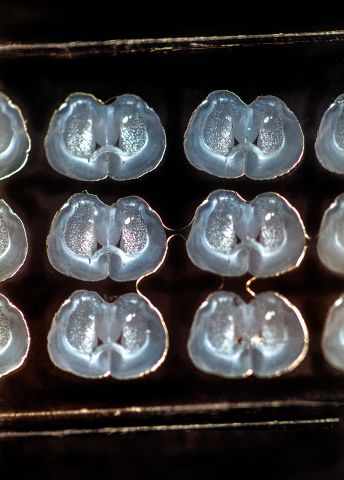
Project Grant 2020
Brain circuits in decision making
Principal investigator:
Professor Marie Carlén
Co-investigators:
Karolinska Institutet
Konstantinos Meletis
Institution:
Karolinska Institutet
Grant in SEK:
SEK 32,200,000 over five years
“We want to examine fundamental processes in the brain, and contribute new knowledge. At present we lack basic knowledge of how the brain works. No one knows what kind of brain activity takes place when decisions are made. Although there are numerous studies that provide clues, there is no complete model,” explains Marie Carlén, who is leading the project at Karolinska Institutet.
She points out that the brain constantly makes decisions that are then translated into actions.
“Drinking coffee or going to work are simple examples. But all decision making is based on judgments made by the brain on the basis of experience, the current situation and the objective to be achieved.”
Carlén and her co-investigator Konstantinos Meletis, who is also her husband, are focusing on cognitive processes. Anomalies in those processes often indicate neuropsychiatric functional impairment and mental illness.
“That’s why it’s so important to understand the essential workings of those processes. Hopefully, this will enable us to understand the problems involved in mental illness.”
Autistic mice
But cellular processes of this kind in the brain cannot be studied in human subjects. So Carlén and Meletis are using mice.
They insert electrodes in the brains of the mice, enabling them to study up to 1,000 neurons and their activity in real time when the mouse is faced with decisions of various kinds. The animals’ behavior is also recorded on ultra-high-resolution film.
“We know exactly what they do when their pupils dilate, their faces or other parts of their body are touched. This enables us to relate what the electrodes record to specific processes in the brain and the behavior of the mouse.”
Much time is spent training the mice to perform tasks related to predetermined cognitive processes.
“Everything we do is governed by motivation – a fact we are exploiting in our experiments.”
The mice may be offered two tubes containing different drinks, for instance. They have to decide which tube to choose. One contains only water, the other sugar solution.
“We can then change the conditions in which they make their choices and study how their behavior changes. This enables us to study the decisions they make and how they are influenced by reward and motivation.”
The project, funded by Knut and Alice Wallenberg Foundation, is focusing on the prefrontal cortex, and the striatum, which is located deeper in the brain and is crucial to our ability to carry out the decisions made in the prefrontal cortex.
“The prefrontal cortex is believed to be the most complex information processor in the brain. It receives information from, and sends information to, virtually the whole of the rest of the brain. It is therefore not surprising that the prefrontal cortex has been implicated in nearly all forms of mental illness.”
The emphasis on how the prefrontal cortex facilitates and controls various processes such as decision making, planning, attention, and how we are able to select and discard information, is one reason they have chosen to focus on autism.
“It’s one of the few neuropsychiatric conditions where we can see a clear element of heredity. The autism spectrum is a broad one, but in some cases the functional changes are caused by defects in a specific gene. This means we can study mice that also carry a change in that particular gene.”
Paying attention to the attention problem
The dream scenario is to understand how different kinds of neuron contribute to cognitive processes, and identify the distinguishing cellular and molecular features of the most important cell types.
“That would enable us to identify a target for drugs. These days chemists can make virtually any molecule. The problem is they don’t know which one to make.”
It would then be possible to tailor therapeutics to have a preference for certain neurons. Current drugs represent a broadside approach, which means they also have side effects.
“My aim is to identify targets. I’m not interested in developing drugs; I want to know how the brain and its neural networks operate – the role played by neurons of various kinds. I want to find out where in the brain the cells are located, how they’re connected, and which ones communicate with each other.”
Another method being used in the project for this purpose is optogenetics. The scientists can use light and light-sensitive molecules to turn activity in selected neurons on and off.”
“This enables us to change activity patterns in neurons, and create a potential disease model in real time. The result is a ‘mutant’ mouse that has functional changes in its cells while the light is on.”
The researchers are primarily interested in ascertaining how neurons in the prefrontal cortex that are involved in decision making interact with neurons in different parts of the striatum.
“We want to demonstrate how changes in activity in specific cells impact decision making. But first we need to understand how the cells operate normally so we can make relevant changes to their activity,” Carlén explains.
Text Carina Dahlberg
Translation Maxwell Arding
Photo Magnus Bergström
